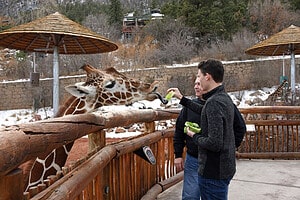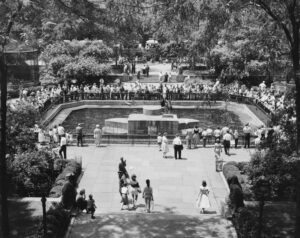Wildlife sanctuaries offer spaces for the public to learn more about endangered and exploited animal species. Many different sanctuaries aid animals that cannot help themselves, whether they have been raised as pets or faced human-related injury. The best wildlife sanctuaries in Florida share their animal residents in safe, educational ways and work to improve their lives and the lives of other wild creatures. Discover what makes Florida’s best wildlife sanctuaries great places for people to visit and volunteer.
1. Chase Sanctuary and Wildlife Conservancy

Vervet monkeys are not native to Florida, which means organizations like Chase Sanctuary and Wildlife Conservancy must step in when they receive injuries on powerlines.
©Thomas Shahan, CC BY 2.0, via Wikimedia Commons – License
In Webster, FL, Chase Sanctuary and Wildlife Conservancy offers programs to help endangered and exploited species. Chase Sanctuary also provides educational programs to increase awareness about the harmful primate pet industry.
Chase Sanctuary provides care and rehabilitation to pet primates, who become aggressive when held captive as pets. Another aspect of Chase Sanctuary and Wildlife Conservancy, which makes it one of Florida’s best wildlife sanctuaries, is its commitment to providing open-air habitats to promote proper social interaction.
One of the sanctuary’s most important projects involves vervet monkeys. Many vervet monkeys, including a female named Betty, suffer injuries but can never be released back into the wild. Vervet monkeys are not native to Florida, so they find a forever home at Chase Sanctuary and Wildlife Conservancy.
2. Seacrest Wolf Preserve
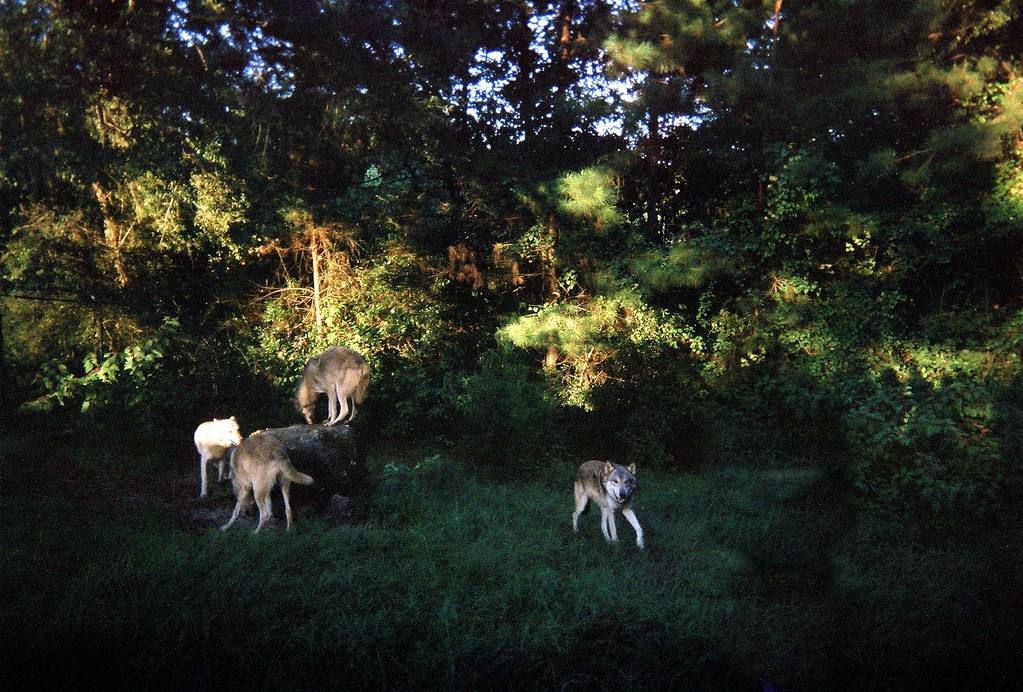
Visitors can “adopt” a wolf at the sanctuary to help support the care and long-term enrichment of the wolves.
©Karsun Designs / Flickr – License
Seacrest Wolf Preserve began in 1999 as a small rescue to care for wolves in need. Located in Chipley, FL, this wildlife sanctuary provides a hands-on educational experience for visitors better to understand the natural world, particularly wolf populations.
Today, Seacrest Wolf Preserve is home to 22 wolves and other smaller species native to Florida, including foxes, raccoons, opossums, and skunks. Animal specialists work at Seacrest Wolf Preserve, offering care to the residents and valuable insights to the visiting public.
The VIP Tour option is one of the most unique experiences at this sanctuary. A tour guide takes special guests into wolf enclosures to learn about them up close and personal. They can meet some of the wolves that call Seacrest Wolf Preserve home, including Pawnee, a gray wolf, and Yeti, an Arctic wolf.
3. The Turtle Hospital
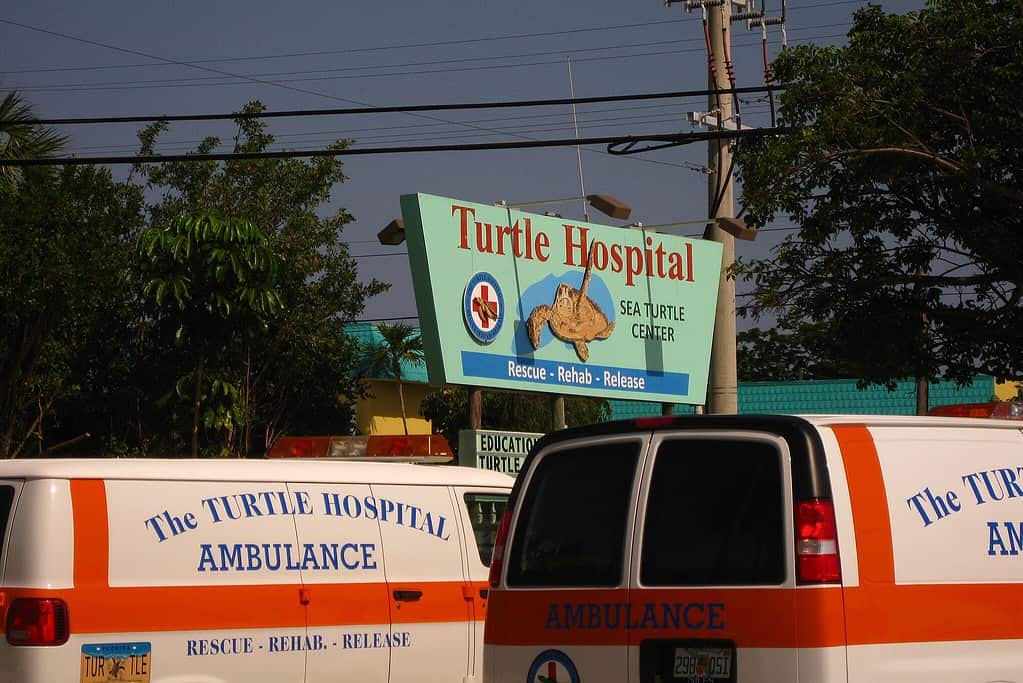
The Turtle Hospital offers help to anyone dealing with an injured or distressed
sea turtle
in the Florida Keys.
©Isles Yacht Club / CC BY 2.0 – License
In 1986, the Turtle Hospital opened to rehab injured sea turtles and educate the public about them. Other elements of this wildlife sanctuary include helping with research about sea turtles and speaking in favor of environmental laws to keep them safe.
The Turtle Hospital collaborates with many partners, including the University of Florida and the University of Georgia. Since opening, the Turtle Hospital has been able to help over 3,000 sea turtles get back to the wild. Some of the injuries documented by the sanctuary include boat hits, entanglement, and stomach impaction from swallowing synthetic materials.
Several sea turtles are permanent residents at the sanctuary due to various situations, including Bender, Coastie, April, and Sekoi. The Turtle Hospital participates in programs that have fit several rescued sea turtles with satellite transmitters. In 2023, Marcia, a juvenile green sea turtle, was treated for a disorder and released back into the ocean. Anyone can track her movements worldwide through the Sea Turtle Conservancy’s Tour de Turtle program.
4. Busch Wildlife Sanctuary
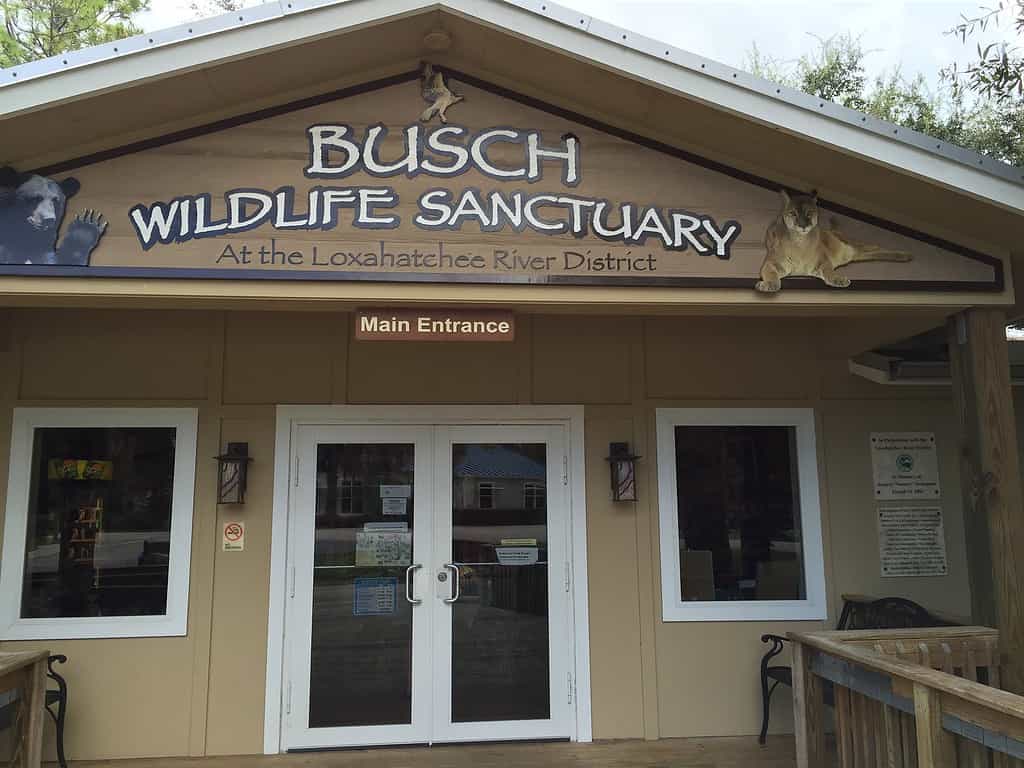
The Busch Wildlife Sanctuary holds special educational programs, including a junior naturalist program for young people to learn about environmental conservation.
©Florida Fish and Wildlife / Flickr – License
A wildlife sanctuary with over 40 years in protection and conservation, the Busch Wildlife Sanctuary works to rehabilitate wildlife and educate the public on the environment. The sanctuary became a partner of The Peter W. Busch Family Foundation in 1994, which gave it its name.
The Busch Wildlife Sanctuary helps a variety of wildlife native to Florida who are injured, sick, or orphaned. At Busch, deer, bald eagles, raccoons, great blue herons, and other wildlife receive life-saving aid.
And there are so many activities for guests to do at the sanctuary. Every day, this wildlife sanctuary features exciting programs for visitors. Native animals from Florida help people of all ages learn about conservation efforts at the Educational Amphitheater. Every Monday, guests can learn more about alligators and their importance as keystone species at the Swamp Servings program.
5. Central Florida Animal Reserve

Enrichment programs keep the big cat rescues at Central Florida Animal Reserve happy and engaged even though they cannot return to the wild.
©Petr Hamerník / CC BY-SA 4.0 – License
Central Florida Animal Reserve, located in St. Cloud, FL, rescues numerous big cats with the motto of compassion, conservation, and commitment. As a wildlife sanctuary, it houses lions, leopards, tigers, and cougars that may be former pets or rescues. Recently, they opened a visitor center to serve as a space for educational programming and displays.
To get involved with the Central Florida Animal Reserve, there are volunteer opportunities and guided tours. Volunteers help with animal care, event planning, graphic design, and other aspects of daily operations. Various guided walking tours allow guests to learn more about the big cats who call the reserve home safely.
6. Croc Encounters
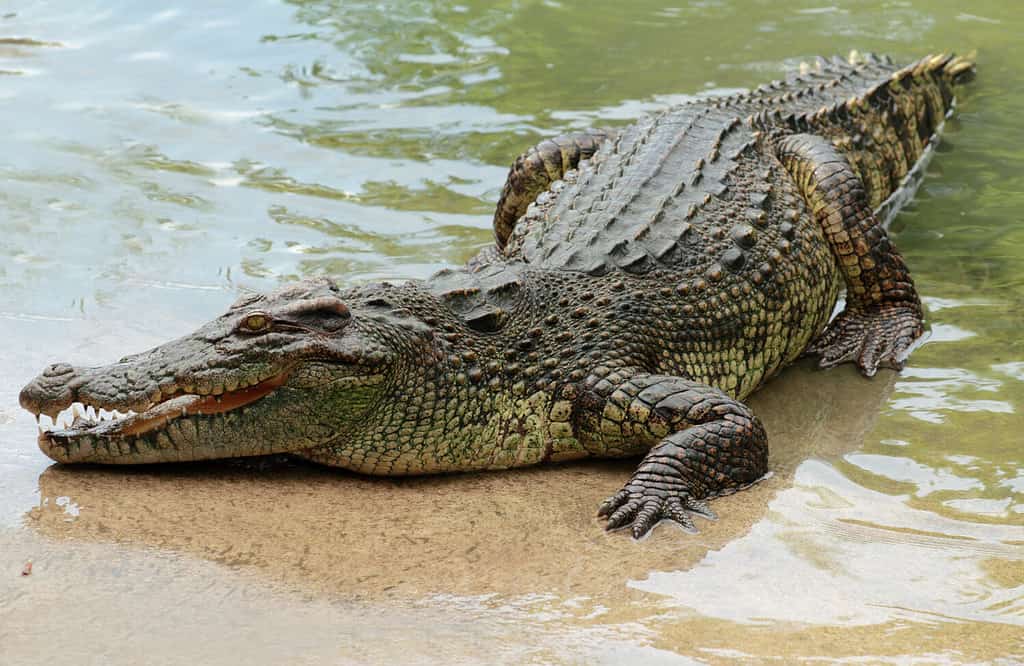
Crocodiles, alligators, and other large reptiles are unsuitable for people to raise as pets, so Croc Encounters sometimes offers help.
©Naypong Studio/Shutterstock.com
Begun in 2005 as a wildlife sanctuary for unwanted reptiles, Croc Encounters offers space to reptiles, birds, and mammals. In 2008, the facility in Tampa, FL, opened to guided tours to help share more about crocodiles to increase public awareness and acceptance of them and other reptiles.
The sanctuary’s primary focus began with crocodiles; the facility houses many crocodiles, alligators, and caimans. Also housed at Croc Encounters are snakes, turtles, lizards, and amphibians. These animals receive specialized care and come from a variety of situations, including confiscation from irresponsible individuals.
The first resident of Croc Encounters was an American Alligator called Amos, who was initially kept as a pet. Since arriving at the sanctuary, his size has grown to about 600 pounds and over 11 feet long.
7. McCarthy’s Wildlife Sanctuary
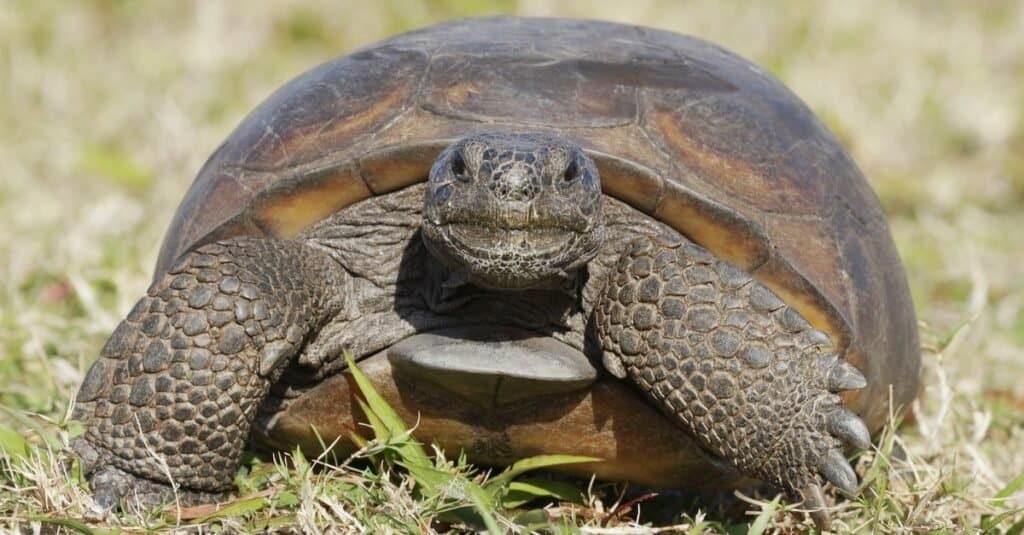
The sanctuary includes a wide variety of mammals, birds, and reptiles.
©Brian Lasenby/Shutterstock.com
McCarthy’s Wildlife Sanctuary, located in West Palm Beach, FL, started as a passion project of Mark McCarthy. Mark McCarthy has worked with animals since 1972, with experience in various creatures, including reptiles, big cats, and primates. For years, he worked to create film and print ads with some of the exotic animals he had rescued. In 1990, he built his sanctuary, which sits on 5 acres.
McCarthy’s Wildlife Sanctuary each year helps over 4,000 injured Florida native species. The sanctuary also rescues exotic animals from difficult situations, with many remaining permanent residents. Several incredible raptor flights provide space for wounded birds to begin flying again in a controlled area.
Guided tours offer guests a closer look at the sanctuary and how it helps rehabilitate and care for animals. Several small animals, like the tortoise, parrot, and snakes, may be available as ambassadors.
8. Shy Wolf Sanctuary

In addition to wolves and wolf-dog hybrids, Shy Wolf Sanctuary also has a few New Guinea singing dogs as permanent residents.
©Tara Lynn and Co/Shutterstock.com
Nancy and Kent Smith founded Shy Wolf Sanctuary in 1993 to provide a home for animals that could not go to wildlife rehabilitators or zoos. From educating the public about owning wolfdogs to working with various area organizations in their Healing Hearts partnership program, Shy Wolf Sanctuary has created one of the best wildlife sanctuaries in Florida dedicated to rescuing wolves and other animals.
The Naples, FL, sanctuary has become a refuge for cougars, wolves, wolf and dog hybrids, and foxes. Shy Wolf Sanctuary cares for many other animals beyond wolves. It is one of only a few locations with permission to care for the Gopher Tortoise, a threatened species in Florida.
Over the years, this wildlife sanctuary has rescued over 1,250 animals and provided educational experiences to thousands of visitors.
9. Florida Keys Wild Bird Center
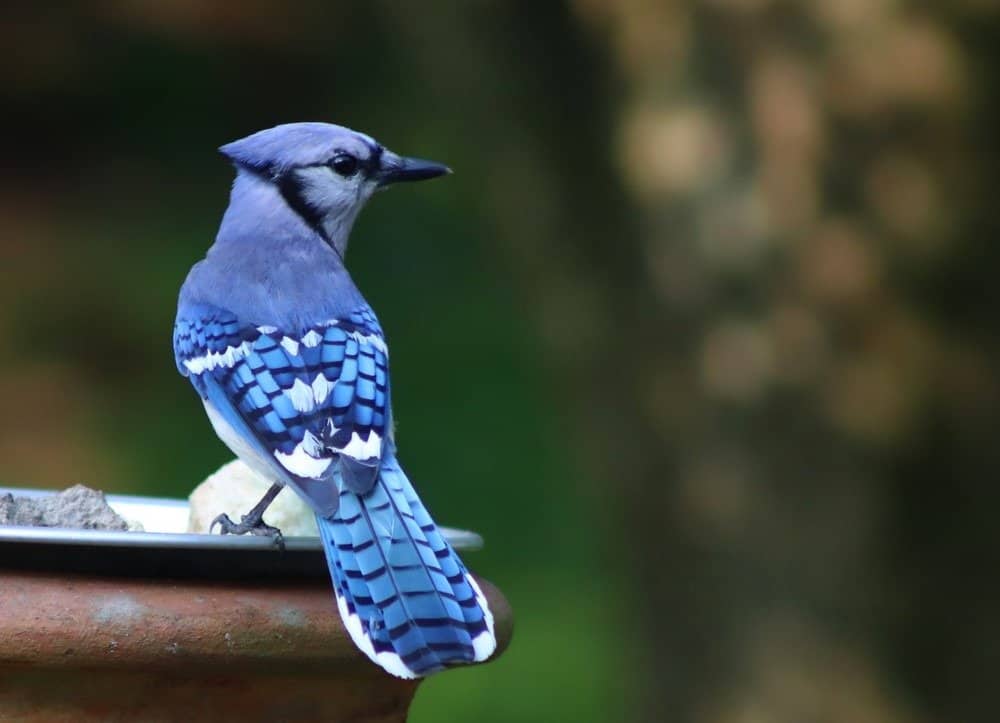
The Florida Keys Wild Bird Center sometimes rescues juvenile birds, like blue jays and mourning doves, that imprint on their caretakers. These birds stay at the center for their entire life.
©Eleanor McDonie/Shutterstock.com
Laura Quinn founded the Florida Keys Wild Bird Center in 1988, and it opened for business officially in 1991. She partnered with a veterinarian, Dr. Robert Foley, to learn how to rehabilitate injured birds, raise orphaned ones, and care for sick ones. Today, the Tavernier, FL, wildlife sanctuary offers a shelter for birds not being released back into the wild. It is also a temporary home for birds who need care.
Housed permanently at the Florida Keys Wild Bird Center are 60 birds from 30 species, including short-tailed hawks, barn owls, and Amazon parrots. These birds have exceptional circumstances that prevent the center from releasing them into the wild.
Another critical part of the sanctuary, which makes it one of the best wildlife sanctuaries in Florida for bird rehabilitation, is the Mission Wild Bird Hospital. This hospital, built in 2014, provides expert care to native and migratory birds needing aid.
10. Wildlife Sanctuary of Northwest Florida
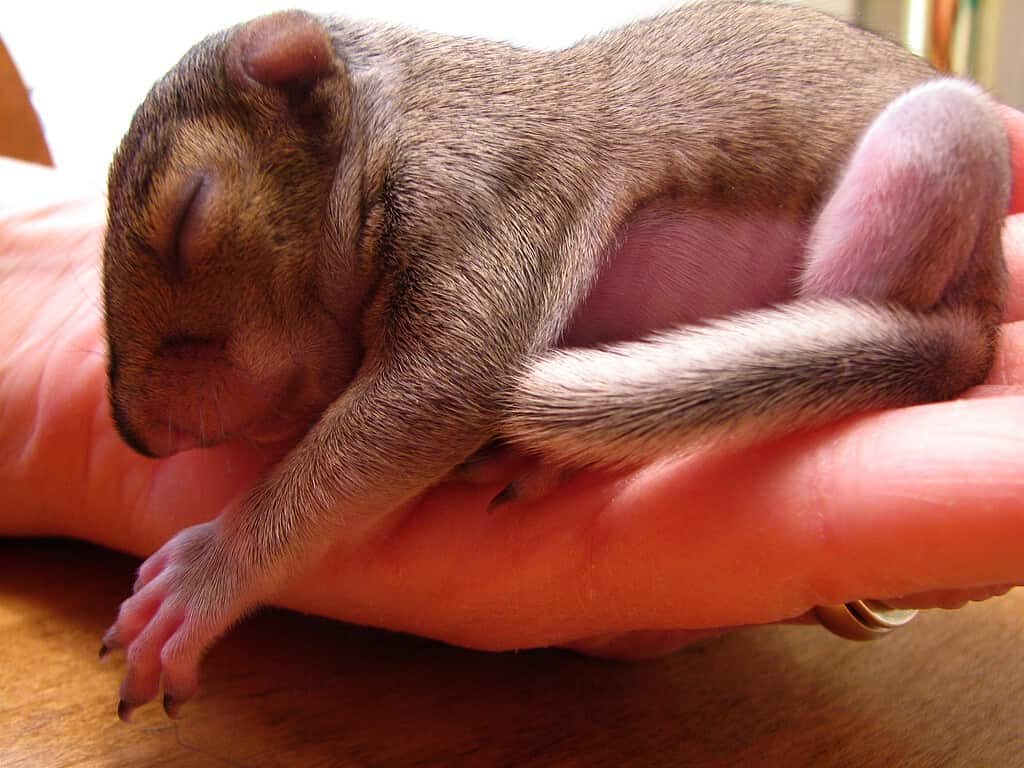
The Wildlife Sanctuary of Northwest Florida recommends only limited handling of injured or orphaned wildlife, including squirrels, birds, and other creatures.
©Audrey / Flickr – License
A non-profit wildlife sanctuary based in Pensacola, FL, the Wildlife Sanctuary of Northwest Florida gives necessary care to wounded and orphaned native species in Florida. Wounded or sick birds and animals can be taken to this sanctuary for appropriate care.
Over 50 animals permanently call the Wildlife Sanctuary of Northwest Florida home for various reasons. Permanent residents include bald eagles, owls, and hawks. Visitors can tour the sanctuary alone or schedule a guided tour with a team member. And there are plenty of opportunities for anyone to volunteer their time to help the sanctuary with their daily tasks and chores.
Every year, the wildlife sanctuary accepts interns from around the country to gain experience in animal husbandry, public education, and species identification. There is plenty for interns to get their hands on. An average of 40 animals enter the sanctuary daily in spring and summer!
The photo featured at the top of this post is © eugenesergeev/iStock via Getty Images
Thank you for reading! Have some feedback for us? Contact the AZ Animals editorial team.



